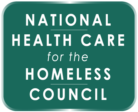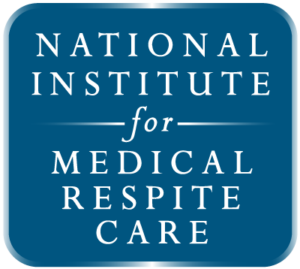Q & A with Dr. Philip M. Alberti
The following questions and answers are from the 2021 National Health Care for the Homeless Conference plenary session with Dr. Philip Alberti, Ph.D., Senior Director, Health Equity Research and Policy Founding Director, AAMC Center for Health Justice Association of American Medical Colleges. These particular questions were ones that were not answered in person during the plenary due to time constraints.
Q: Dr. Alberti, how would you suggest including patient/consumer/public involvement in Z Code development? The GRAVITY projects standards development is an example of co-development on a grand scale. Currently they are developing standards for stress, social isolation, and other social determinants.
A: Spot on! The first step for any of this work should be community and/or patient engagement. To make Z-codes more actionable and more closely aligned with both evidence-based interventions and patient experience/desires, building this together is paramount. The GRAVITY project is a great example of an effort to engage the broadest possible audience on one aspect of this work. It shows it’s possible. On a less grand but still national scale, the AAMC Center for Health Justice’s recently released Principles of Trustworthiness initiative was developed in deep collaboration with community members, researchers and clinicians from across the country. Community and patient engagement on a national scale is not easy, but it’s important and it’s doable – if you’re willing to change your process and perspective.
Q: Do you think adjusting fee-for-service medical payments for “social complexity” could just justify paying more for less care to already underserved patients rather than actually getting more service for those people in need?
A: That is not an uncommon concern. From a purely methodological perspective, I’d first say that if there are factors outside of medical care’s control (poverty, lack of affordable housing, etc.) that impact outcomes of import to CMS, we need to make sure hospitals aren’t penalized because of those factors. The goal has to be models that best isolate “quality differences” (as measured). And avoiding unfairly penalizing safety net providers adds the health equity imperative on top of the methodological one.
That said, we can’t adjust in isolation: any social risk adjustment should be paired with stratification on that social risk factor so we can see if there are inequities between patients in different socioeconomic groups or based on differential access to housing, to transportation. We can highlight inequities even if the model is adjusted. Further, we should be developing payment or incentive systems that focus on closing those local care gaps identified through that stratification. We could do that and still adjust for patient and neighborhood social factors in our readmissions models, for example. (If we had the data, which we don’t, but that’s another story.)
Q: What are the most powerful levers that employees in medical institutions can pull to mobilize leadership to take meaningful action toward health equity?
A: “Metrics that matter”. Not everyone is swayed by the moral imperative of health equity and anti-racism. So, for those of us that are, we need to find other arguments to broaden the tent. And frankly, that’s a facet of community engagement too: find the metrics that matter to your desired partners and run with them. They don’t have to be the same outcomes, but they do have to be equally valued outcomes.
If you’re an academic medical center, your learners – and your accreditors – increasingly care about health equity work so you should care about this work. If your hospital is not for profit, the IRS cares about this work, so you should care about this work. If you’re engaged in population health management, a focus on community engagement and community health can help avoid things like unplanned readmissions, so you should care about this work. Etc.
Q: NQCA is looking to develop health equity measure sets or changing current measures to include components of equity. For existing measures, I think you are suggesting sub-setting measures by social determinants of health and/or how one identifies?
A: Yes, that’s basically the stratification I was talking about above. Also, in case folks missed it the Assistant Secretary for Planning and Evaluation (ASPE) just released a report called “Developing Health Equity Measures”. It’s a framework and an evaluation of extant attempts of HE measurement.
Q: You have focused on medical education. What comments do you have on other health care disciplines like nursing education, social work education?
A: Ditto to all! Just like health equity is a collaborative, multi-sector endeavor, health care equity is team-based, multi-disciplinary one. This might be unpopular in some circles but in my opinion, the physician might be the “least important” member of the care team when it comes to promoting and achieving health care equity. (Maybe that’s why Z-codes can be coded by any member of the team!)
This isn’t a topic I can speak to with any kind of lived experience behind the words, but I believe there are core “health care equity”-promoting competencies that providers of all kinds should possess: many of those are captured in the AAMC QI/PS competencies I presented. But the workflows, the care processes, the infrastructures that are needed to facilitate the development and actualization of those competencies is another matter. And effective processes might differ from place to place, hospital to hospital – this is why co-development with whole care team and patients and communities is so important.
Q: What are your thoughts on how do we as a capitalistic county reconcile the vital conditions? Our politicians are focused on canceling social programs that are vital to the majority of the country’s overall health, yet they are more focused on cost.
A: While I’m tempted to give the full soapbox rant, I’ll just give one word: Vote.

